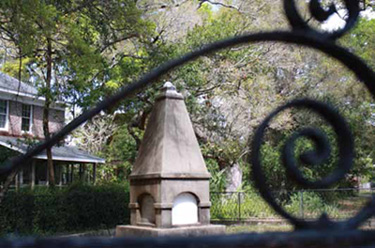
First a little background. In June 1812, the fledgling United States of America was embroiled in an ongoing conflict between longtime enemies Britain and France. There were heated trade disagreements, anger over Britain’s policy of forcing U.S. sailors to man its ships and fury concerning Britain’s support of Native American efforts to block American expansion to the west.
In the U.S. House of Representatives, the War Hawks, led by South Carolina’s John C. Calhoun, advocated for a declaration of war, and, on June 18, 1812, President James Madison complied with their wishes. Among the first military units to be mustered was the Third Regiment of South Carolina Militia, which stepped up to protect Charleston Harbor. The men were stationed at Haddrell’s Point, an early name for what later became part of Mount Pleasant, according to Victoria Musheff, chairperson of the town of Mount Pleasant Historical Commission.
During the Revolutionary War, a battery had been erected in the area between Shem Creek and the cove at the end of Pitt Street that was named for early settler George Haddrell. During President George Washington’s Southern tour of 1791, he took a boat to Charleston, leaving from Haddrell’s Point.
During wartime two centuries ago, the harbor city of Charleston was most vulnerable from the Atlantic ocean, Musheff noted.
“In the shadow of the Revolutionary War, Charlestonians had good reason to feel very nervous about the possibility of British naval bombardment and invasion,” she pointed out.
She explained that an 1804 hurricane had ruined Charleston Harbor’s fortifications, and repairs were completed just in time for the War of 1812.
“I think there was probably a steady concern. They’d already experienced that bombardment during the Revolutionary War and it was very frightening. And they felt very vulnerable,” she said.
In addition to the Third Regiment of South Carolina Militia, the Third Regiment of State Troops was called to action, led by Lt. Col. John Rutledge Jr., a Charlestonian and the son of John Rutledge, South Carolina’s first governor.
Many South Carolina soldiers died not from battle but from disease, possibly dysentery, malaria and yellow fever, according to Musheff.
“Where there is a war, there is disease among the troops,” she noted. “And this is always a top concern of the leaders.”
Today, a War of 1812 encampment marker stands on Carr Street outside the town’s Confederate Cemetery, commemorating the soldiers who died there. Inside the cemetery, a War of 1812 monument further memorializes those who gave their young lives in defense of a young country.
The monument’s inscription reads: “On the 18th, June 1812 the United States of America declared war against Great Britain. At the first Sound of Trumpet, the Patriot Soldiers who sleep beneath this monument flew to the Standard of Liberty. Here they fell beneath the scythe of Death. The sympathies of the Brave, the tear of the Stranger, and the Slow Dirges of the Camp attended them to the tomb.”
Interestingly, the soldiers are not actually buried beneath the monument. The memorial stone, which at one time stood at Pitt and King Streets, was moved in preparation for still another conflict. Before the Civil War erupted, it was transported to its current spot, which was thought to be a safer location.
The history books tell us that the British burned the U.S. Capitol and the White House during the War of 1812 and that the same conflict brought us our national anthem, “The Star-Spangled Banner,” its poignant words penned by Francis Scott Key as he watched Fort McHenry face a fierce bombardment at the tide-turning Battle of Baltimore. But now, when you hear about plans to mark the 200th anniversary of the war, you will know that Mount Pleasant earned its place among the centuries-old memories of what some considered to be the second American Revolution.
Photo by Amy Kehm

Thank you for this article. My great-great grandfather was with the 3rd Regiment SC Militia. We know very little about him. We do know he served 6 months and mustered out in Orangeburg. I would like your permission to copy this article to his profile page in my Ancestry tree and also a closed group page of his descendants on FB.
Dear Martha,
Thank you for sharing about your grandfather’s military service in the War of 1812. I hope that you copied this article and posted it in your group and on your tree. As long as you link the article providing credit back to the magazine in which it is published, you’re fine. It’s important to share information, especially about this conflict, since very little has been written and we don’t talk much about it here in South Carolina.
Victoria, Martha, we love that this article has garnered your attention and interest. We ask that as part of providing credit back to the magazine you would include a link back to our website.
Where can I find a listing of officers and men who were part of Rutledge’s Third Regiment of State Troops?
My GG Grandfather Henry Lawson Butler, 1790-1846 served with Rutledge’s 3rd Regiment, SC state troops as Lieutenant Henry L. Butler. He commanded the unit after Captain John McNeil left the unit.
Dear Channing,
While I cannot vouch for the accuracy of these online lists, it’s a starting point for your interest:
https://southcarolinagenealogy.com/military
https://www.carolana.com/SC/1800s/antebellum/war_of_1812_military_units.html
Victoria Musheff, M.A./American History/The Citadel